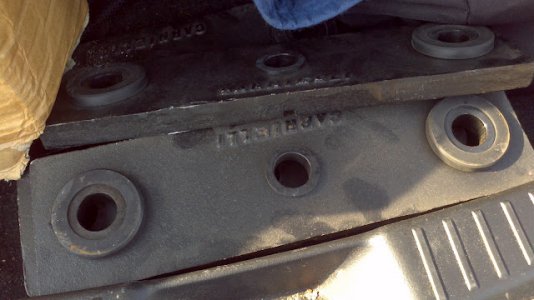- Joined
- Feb 22, 2012
- Messages
- 924
So I acquired a few weights from a gym pulley machine:

I am assuming this is cast iron - so first question of the day, does anyone with experience working/getting those know if they are indeed using cast-iron for those weights or might it be other materials (cast iron seems to make the most sense to me as it's the cheapest to produce but I could be mistaken)?
Second question is- are there any points to keep in mind (other than it's freaking messy) when using this for projects around the shop due to it's nature to chip/crack or are those marginal (I know backplates are sometimes using cast iron?)?
Thanks in advance!


I am assuming this is cast iron - so first question of the day, does anyone with experience working/getting those know if they are indeed using cast-iron for those weights or might it be other materials (cast iron seems to make the most sense to me as it's the cheapest to produce but I could be mistaken)?
Second question is- are there any points to keep in mind (other than it's freaking messy) when using this for projects around the shop due to it's nature to chip/crack or are those marginal (I know backplates are sometimes using cast iron?)?
Thanks in advance!


